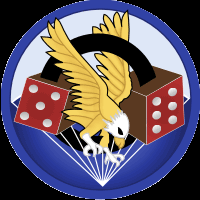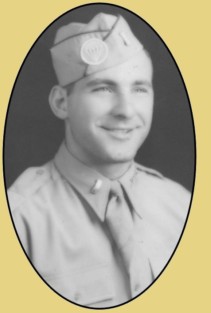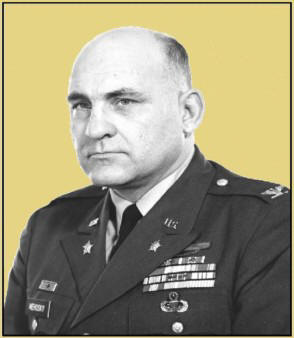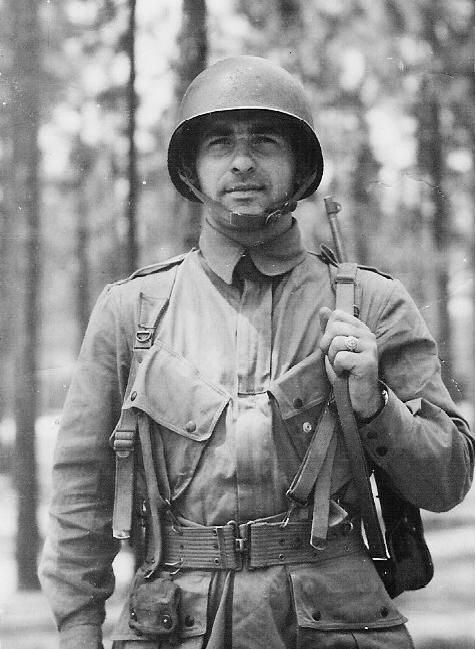
EDWARD S MEHOSKY

EDWARD S MEHOSKY
Many thank to Ivan Mehosky for having interviewed his father for me. Ivan is also a webmaster, his website speaks about the book he wrote about his father: http://www.mehoskybooks.com/
Thanks to Edward Mehosky for having accepted to answer all my questions.
 <= Lt. Edward
Mehosky - 1943
<= Lt. Edward
Mehosky - 1943

Colonel Edward Mehosky - 1974
HQ US Army / European Command / Stuttgart / Germany
Edward S Mehosky was born on November 16th, 1921 in Reading, Pennsylvania. His ancestors were Polish and Lithuanian.
Edward had a happy childhood. And during his teenage years he was a real athlete especially at football and baseball. At college he was besides a well known sportsman in those two sports. But it is especially the baseball which attracted him. But his dream of career would fly away when he broke his leg.
“We did not have much food on the table. It was the time of the Great Depression. But despite everything, I had a happy childhood."
“As a child, I used to play in the street. Later, I played in a team of baseball and football."
“Once at college I played baseball and football and after having finished my studies, I played baseball as a semi-professional at that time. I also worked in an assembly of motor factory."
The 1st of August 1940, Edward S Mehosky volunteered for the army. At the beginning he was stationed at Arlington Cantonnement, Virginia. It was used for the 12th Infantry Regiment.
“It was a good basic training for the soldier with the centre of the 12HT Infantry attached to the 4th Motorized Infantry Division. I got the rank of Sergeant before being selected for the Officers Candidate School of Fort Benning, Georgia in 1942."
“I got a good training to be an officer. I was graduated and accepted the rank of Second Lieutenant."
Edward Mehosky was assigned to the 85th Infantry Division at Camp Shelby, Mississippi as the commander of the group. Two months later, he volunteered for the parachutists. Edward Mehosky was 21 years old.
“The commander of the unit which I was assigned to and of where I became one of the officers, assigned me to a division of training in Mississippi. But the training was not that serious to prepare the men to the combats, then I volunteered for 506th PIR lately trained in Toccoa, Georgia in August and in September 1942. »
“They were the 6th regiment of the American paratroopers trained during the Second World war and initially conceived like an independent unit."
“It was the best physical and mental drive got with the 506th. I carried out 5 qualifying jumps the same day and became patented as a parachutist."
“Our group and the formation of our company was the best which made us one of the best regiments during the Second War."
“I was promoted First Lieutenant and accepted the command of the 1st Group of H Company the 3rd Battalion of 506th PIR in Toccoa, Georgia."
At the end of August, the 506th PIR was sent to New York. The regiment embarked on board of the S.S.Samaria to get to Liverpool on September 15th, 1943. Then, they reached Ramsbury by train.
Edward Mehosky was wounded during a training jump.
“It was a night jump in October or November 1943. The weather was so cold that my fingers were cold before jumping. When I landed, my knee twisted tearing off a piece of bone. But at the time of the jump on Normandy on June 5th, 1944, it was completely cured and I jumped over with my group."
As for the majority of the parachutists, his jump would not happen as it was supposed to happen.
“Everything we’ve been taught was flying away as we were about to arrive to hell which started with the approach of the drop zone in North-East Carentan. A powerful anti-aircraft fire started and spread out our apparatuses. We were released far from the DZ. The commander of the 3rd battalion was killed. For the majority of the units it was a question of survival and to try to get to the objective."
The mission of the 3rd battalion of the 506th PIR was to hold the far right hand side of the 101st Airborne and to make safe two bridges crossing the Douve river against the counter-attack enemy.
“Our battalion was so spread out, captured or killed that only one group of hardly the size of a company achieved the goal on the 1st day! Me with other men got on the 2nd day. Then, each day we were a little more numerous."
“Despite everything, we held our objective and to prevent the enemy from attacking and penetrating in our side."
“At that time, I was not with my group anymore, I was useful as an executive officer, assisting the commander for the best and taking the command of other groups lasting only during the phases of attacks."
During this period in Normandy, Edward Mehosky was once wounded, he was decorated with the Purple Heart.
“I was wounded a little after my landing in fields surrounded by hedges. Two other paras of a different regiment joined me. We were moving when we bumped into a German nest of machine guns. We opened fire. A glare of the machine-gun killed one of the soldiers beside me and the leg notched me.
Then to end, a grenade destroyed the enemy position.
Then, we met 12 other soldiers at the edge of a hedge and carried on our way towards the friendly lines."
Edward Mehosky was also decorated with the Bronze Star.
“It was during the battle of Carentan, while attacking the German positions in the western city. We found ourselves in front of the enemy fire uncovered in a vast field facing hedges. »
“At that very moment I saved the life of two wounded soldiers. I covered them while they moved back with cover. »
“Each man during combat is afraid. But all you have to do is to find the right balance between this fear and the job for which you were sent to and to give all your energy to this job. Always care for the well being of your men and the objective to achieve.
To think of the action and of the others before acting are the key of a good leader and that helps to overcome the fear. »
Edward Mehosky did not take part in the jump over Holland. He was just leaving the hospital.
He joined the 506th in Holland in October 1944.
“When I finally joined my unit, it was helding the southern sector of the Neider Rijn river between the towns of Wageningen and Arnhem."
“One night, I was leading the head of a patrol and crossing the river to penetrate into the enemy lines in Wageningen. We drew in a German club NCO. Then we moved back without incident."
“Two or three days later, I was given the command of C Company of the 1st Battalion of the 506th PIR."
“At mid November, we left Holland to rest in France."
This period of rest would only be a short rest, because on the 16th of December, the Germans were launching their ultimate offensive.
“None among us thought that the war would be over before December 1944."
“In France, we were reorganized, receiving some new equipment and a training for the next mission which would come later."
“But we did not expect a German counter-attack in Belgium, in the Ardennes in December 1944!"
Actually nobody expected it, it was a full surprise for the entire world. The 101st was just back from 70 days of combat in Holland. The paras needed some rest. Unfortunately, the alarm was given, the men had to get ready and were sent to Belgium.
“We were still cleaning our weapons, we have just received the winter equipment and we did not have ammunition."
Once into Belgium, the 101St accepted the order to move towards Bastogne and to hold the city at all costs.
“We formed a defensive perimeter around the city with our 4 regiments: the 501st, 502nd, 506th and 327th GIR. A unit of the 10th Armored was already in Bastogne and had sent groups of tanks and tank destroyers outside the city."
Once into Bastogne, the 1st battalion accepted the order to move towards the north to Noville to help out a group of the 10th Armored which was in link with the enemy.
“We got ammunition on Noville’s road with the thanks of the 10th Armored supply officer."
“My C Company carried on her way towards the north. Once there, we attacked the heights on other side of the city. But we were pushed back by a German counter attack. We formed a new defensive perimeter around Noville."
“After two days of hard combat, we returned to our lines."
“The 1st Battalion and the Desorby team, the 10th Armored lost 13 officers and 199 men, killed, wounded or missing in Noville against the German advance."
“The Germans paid a heavy price: they lost 31 armoured vehicles and a whole battalion of the 3rd Regiment of Panzer was decimated."
Then, the unit of Edward Mehosky was placed in reserve. On December 20, Edward learned that the Germans had completely surrounded Bastogne.
On December 21st, he found out the enemy had broken the lines between the sectors of the 501st and the 506th. A wooded area along a railway line . The 1st battalion of the 506th PIR accepted the order to eliminate the threat.
“On the morning of the 22nd, my company came into the wood on the east of Foy. My company and A company made the contact with the enemy and attacked it. Their fires stopped my moves, I then deployed my group to take them on the side. The Germans were pushed back. We killed more than 85 enemies and captured 165 others. They were of the 26ème Volksgrenadier."
All along January 1945, the situation remained secured in the sector of the company of Edward Mehosky.
“We pushed back the enemy, tried to beat the cold, the rain and the snow, fixing our boots when they were rotten.
We also had to keep our socks dry to avoid frostbites which were our number 2 enemy."
After this “defense” phase, the 101st started an “attack” phase.
“We have chased the Germans to the border. They often turned over to shoot us with their tanks when we were in our sectors for the night."
“One of the most important artillery stoppings I met during the war happened during that time."
In February 1945, the unit of Edward Mehosky moved to the south, in France along the German border in the area of Alsace-Lorraine close to the village of Pfaffennhofen.
“It was a quiet area, qualified by strong patrols. I was promoted Captain during this period and I was given the command of C company."
In March, the 101st was back to Mourmelon to rest, to re-equip themselves and to get ready for the final push over Germany.
“During this training period, my wound got worse. I had to be evacuated first to England and then to the United States to be operated. After having recovered, I was discharged from the army in December 1945. I thus missed the enter in Germany with the remainder of my men. It was my part in the war."
After the war, Edward Mehosky re-enlisted in the army, and in 1951, took the command of A company of the 508th Regimental Combat TEAM in Fort Benning, Georgia as a Captain and took part in the training and the preparation of the men for the future combats.
When the Korean War began, Edward Mehosky volunteered to fight. He was assigned to the 40th Infantry Division and accepted the command of a company of machine-gun and on the peak of a mount faced the Chinese positions.
Then, Edward Mehosky was promoted Major. He went back to the United States where he was assigned to the 11HT Airborne Division at Fort Campbell, Kentucky. He was at the Officer Intelligence.
The 11th Airborne was deployed in Germany where Mehosky was assigned later to the 502Nd Battle Group of the Officer Intelligence.
During an exercise of combat, in 1957 against a unit of elite of the Green Berets, Edward Mehosky selected some men, succeeded in capturing the unit and to break their counter-insurrection plan for South Germany.
In 1963, Edward Mehosky was at the Pentagon, he was promoted Lieutenant Colonel, was assigned as a consultant in Vietnam.
From 1964 to 1966, Lt. Coll. Mehosky accepted the command of the 16th Battalion of the 4th Training Brigade at Fort Knox Kentucky where he trained men to fight in Vietnam.
From 1966 to 1967, he was at Fort Ritchie, Maryland with the Alternate Military Command Center as a Chief of Staff. Edward Mehosky was promoted Colonel.
He was later assigned to Mildenhall, in England as a foreman of Alternate Airborne Command.
Colonel Mehosky retired in 1971 after 31 years of service devoted to his country.
